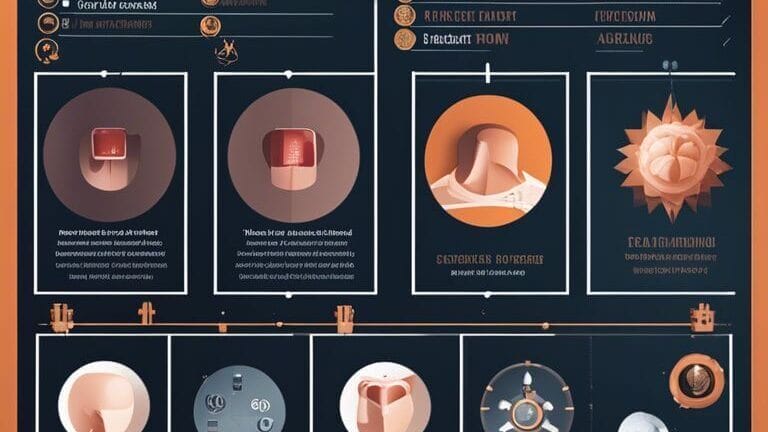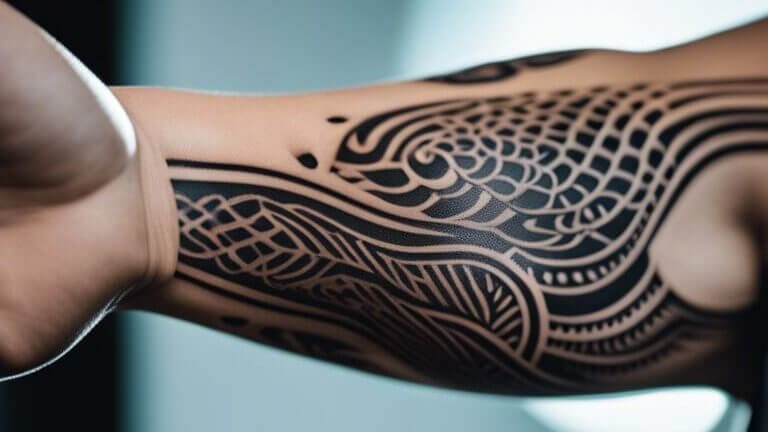The Ultimate Guide to Skin Graft Care: Ensuring Optimal Healing
You, as a patient who has undergone a skin graft procedure, caregivers, or healthcare professionals, understand the importance of proper care to promote healing and minimize complications.
Skin grafts are delicate and require special attention to ensure optimal results.
In this comprehensive guide, we will provide you with crucial tips and best practices for caring for a skin graft, guiding you through the process step by step.
By following these expert recommendations, you can promote healing and minimize the risk of complications effectively.
Let’s initiate on this journey towards optimal healing together.
Immediate Post-Operative Care
Initial Assessment and Recovery Post-Surgery
One of the crucial aspects of skin graft care involves visually examining the graft site for any signs of infection and ensuring the patient is comfortable.
For optimal healing, follow the healthcare provider’s instructions carefully and monitor for any unexpected changes in the appearance or sensation of the grafted area.
Pain Management Strategies
The management of pain post-surgery is important in promoting healing.
The use of prescribed pain medications and appropriate techniques such as ice packs or elevation of the grafted area can help alleviate discomfort and support the recovery process.
The effectiveness of pain management strategies can significantly impact the patient’s recovery and overall experience.
It is crucial to communicate any concerns or changes in pain levels to the healthcare team promptly.
Dressing and Bandage Techniques
This step involves the proper application of dressings and bandages to protect the skin graft and promote healing.
Follow the healthcare provider’s instructions carefully to ensure the graft site remains clean and free from infection.
Any unexpected redness, warmth, or pus around the graft area should be reported to the healthcare provider immediately for further assessment and potential treatment adjustments.
Positioning and Immobilization of Grafted Areas
For the successful integration of the skin graft, proper positioning and immobilization of the grafted areas are crucial.
Follow the healthcare provider’s recommendations for positioning and avoid putting unnecessary pressure on the graft site to support optimal healing and skin integration.
Initial positioning and immobilization can significantly impact the success of the graft and reduce the risk of complications.
Adequate support and care during this stage are important for a successful recovery.
Monitoring Vital Signs and Graft Viability
Proper monitoring of vital signs and graft viability is important post-surgery to ensure the skin graft is healing correctly.
Techniques such as checking for adequate blood flow and temperature in the grafted area can aid in early detection of complications.
Regular monitoring of vital signs and graft viability can help healthcare professionals identify any issues promptly and provide appropriate interventions to support optimal healing and recovery.
Infection Prevention and Monitoring
Understanding Infection Risks
Unlike other wound types, skin graft sites are particularly vulnerable to infection due to the compromised skin barrier and increased risk of exposure to bacteria.
Ensuring proper care and vigilance is vital in preventing complications during the healing process.
Signs and Symptoms of Infection
On your skin graft journey, it’s crucial to stay vigilant for symptoms of infection such as increased pain, redness, swelling, warmth, or drainage from the graft site.
These signs should not be ignored, as early detection can prevent further complications.
For additional peace of mind, regular monitoring of the skin graft site is recommended.
Plus, any concerning changes should be promptly reported to your healthcare provider for further evaluation.
Prophylactic Antibiotic Use
Infection prevention strategies may include the use of prophylactic antibiotics to reduce the risk of postoperative infections.
Antibiotics may be prescribed before or after the skin graft procedure, depending on individual risk factors and surgical considerations.
Infection prevention protocols may vary depending on the type of skin graft and individual patient factors.
Understanding the rationale behind prophylactic antibiotic use is vital in promoting optimal healing and minimizing the risk of complications.
Wound Culture and Sensitivity Testing
Understanding the microbial landscape of the skin graft site through wound culture and sensitivity testing can guide targeted antibiotic therapy and improve treatment outcomes.
For instance, obtaining a culture of any suspicious drainage can help identify the specific pathogens causing infection and inform appropriate antibiotic selection.
Infection Management Protocols
For skin graft patients, adherence to infection management protocols is paramount for successful healing outcomes.
Symptoms of infection must be promptly addressed, and any deviations from the expected healing process should be evaluated by a healthcare professional to prevent complications.
Cleaning and Maintenance of the Graft Site
Guidelines for Safe Cleaning
Maintenance: For patients who have undergone skin graft procedures, ensuring proper cleaning and maintenance of the graft site is crucial in promoting optimal healing.
Following guidelines for safe cleaning, such as gentle washing with mild soap and water, can help prevent infection and support the healing process.
Recommended Cleaning Solutions and Techniques
Cleaning: A key aspect of caring for a skin graft is using the right cleaning solutions and techniques.
Research has shown that using sterile saline solution or mild soap diluted in water can effectively clean the graft site and reduce the risk of infection.
It is important to follow specific instructions provided by your healthcare provider for the best results.
Frequency of Cleaning and Dressing Changes
Site: To ensure the optimal healing of a skin graft, proper frequency of cleaning and dressing changes is important.
Experts recommend cleaning the graft site and changing dressings as instructed by your healthcare provider to minimize the risk of complications and promote healing.
Dealing with Exudate and Discharge
with: Exudate and discharge are common occurrences in the early stages of skin graft healing.
It is important to monitor and manage these symptoms carefully to prevent infection and promote proper healing.
Consulting with your healthcare provider for guidance on managing exudate and discharge is important.
Patient Instruction for At-Home Care
AtHome: Patients are often instructed to continue caring for their graft site at home after the procedure.
Dealing with the graft site with gentle care, following proper cleaning and dressing change instructions, and monitoring for any signs of infection are important components of at-home care.
It is important to prioritize your skin graft care to ensure optimal healing and avoid complications.
The Crucial Role of Moisturizing
Importance of Adequate Moisturization
Keep your skin graft properly moisturized is crucial for promoting healing and preventing complications.
Adequate moisturization helps maintain the skin’s barrier function, prevents excessive dryness, and supports overall skin health.
With proper hydration, the skin graft can heal more effectively, reducing the risk of issues such as infection or graft rejection.
Selecting Appropriate Moisturizers
Selecting the right moisturizer for your skin graft is crucial for optimal healing.
Moisturizers formulated specifically for sensitive, healing skin are the best choice.
Look for products that are fragrance-free, hypoallergenic, and ideally recommended by your healthcare professional.
These moisturizers help nourish and protect the delicate skin of the graft without causing irritation or adverse reactions.
Application Procedures to Ensure Efficacy
Crucial to the healing process of a skin graft is the proper application of moisturizers.
By gently massaging the moisturizer onto the graft, you can enhance circulation and absorption, aiding in the repair of the skin.
A consistent application routine following your healthcare professional’s guidelines will optimize the moisture balance necessary for healing and minimizing complications.
Balancing Moisture Levels without Over-Hydration
Crucial to the healing process of a skin graft is maintaining optimal moisture levels.
While moisturizing is important, balancing hydration without overdoing it is key.
Over-hydration can cause softening of the graft and increase the risk of infection.
Regular assessment of your skin’s moisture levels and adjustment of your moisturizing routine as needed will help maintain the ideal balance.
Patient Education on Moisturizer Use
An crucial aspect of skin graft care is educating patients on proper moisturizer use.
For instance, your healthcare professional can provide personalized guidance on how to incorporate moisturizing into your daily routine for optimal results and recovery.
Protecting the Graft from Harm
Physical Protection Strategies
Your skin graft is a delicate area that requires proper care to ensure optimal healing.
Protecting the graft from physical harm is crucial in promoting a successful recovery.
Avoid activities that may put pressure or strain on the graft site, and be cautious when engaging in physical tasks.
Use of Sunscreen and UV Protection
To shield your skin graft from potential damage, sunscreen and UV protection are necessary.
Exposure to harmful UV rays can hinder the healing process and lead to complications.
Applying a broad-spectrum sunscreen with a high SPF regularly can help safeguard the delicate skin and prevent any adverse effects from sun exposure.
Limiting Exposure to Environmental Harms
The environment can pose risks to your graft site, so it’s crucial to take precautions.
Limiting exposure to harsh elements such as extreme temperatures, pollutants, and chemicals can aid in promoting healing and reducing the risk of complications.
Protecting the graft from these environmental hazards is key in ensuring a successful recovery.
Importance of Avoiding Trauma to the Graft Site
With proper care and attention, you can prevent trauma to the graft site, which can impede the healing process.
Avoid activities that may cause injury or trauma to the area, and handle the skin graft site with care.
Staying vigilant in avoiding trauma can help maintain the integrity of the graft and promote optimal healing.
Adaptive Clothing and Dressing Solutions
Importance of choosing appropriate clothing and dressing solutions to prevent friction and pressure on the graft site cannot be stressed enough.
Opt for loose-fitting, soft fabrics that won’t rub against the skin graft, and consider using padding or protective coverings to shield the area from potential harm.
Promoting Optimal Healing
Nutritional Considerations for Wound Healing
Healing after a skin graft procedure requires adequate nutrition to support the body’s healing processes.
Incorporating a diet rich in protein, vitamins, and minerals can help promote wound healing and tissue regeneration.
Ensure you are consuming foods that are high in these nutrients, such as lean meats, fish, fruits, vegetables, and nuts.
Importance of Hydration and Fluid Intake
Importance of adequate hydration cannot be overstated when it comes to supporting wound healing.
Staying hydrated helps maintain proper blood flow and aids in transporting vital nutrients to the wound site.
Aim to drink at least eight glasses of water a day and avoid excessive consumption of sugary or caffeinated beverages.
Role of Physical Therapy and Rehabilitation
Intake of physical therapy and rehabilitation is crucial for patients undergoing skin graft procedures to promote optimal healing and functional recovery.
Through customized exercise programs and therapy sessions, patients can improve range of motion, strength, and overall healing process.
Utilizing Pharmacological Aids for Healing
Role of pharmacological aids, such as pain medications and antibiotics, can be vital in managing post-operative discomfort and preventing infections.
Follow your healthcare provider’s instructions carefully when taking medications to support the healing process effectively.
Psychological Support and Coping Strategies for Patients
Utilizing optimal psychological support and coping strategies are important for patients undergoing skin graft procedures.
Coping mechanisms such as meditation, relaxation techniques, and support groups can have a positive impact on the healing process and overall well-being.
Recognizing and Responding to Graft Rejection
Identifying Early Signs of Rejection
Signs: To ensure optimal healing after a skin graft procedure, it is crucial to be vigilant for any early signs of rejection.
These may include increased pain, swelling, redness, or warmth around the graft site.
Additionally, if you notice any changes in the appearance of the graft, such as blisters or separation from the surrounding skin, it is important to seek immediate medical attention to prevent further complications.
Therapeutic Interventions for Rejection
Signs: In the unfortunate event of graft rejection, immediate therapeutic interventions are vital to salvage the graft and prevent further damage.
Treatment may involve topical or systemic corticosteroids to reduce inflammation, as well as close monitoring of the graft site to assess its response to treatment.
Interventions: Understanding the underlying factors contributing to graft rejection, such as inadequate blood supply or immune responses, will guide healthcare professionals in selecting the most appropriate therapeutic interventions to promote graft survival.
Close collaboration between patients, caregivers, and healthcare professionals is crucial in implementing effective treatment strategies.
Role of Immunosuppressants
To: Immunosuppressants play a crucial role in managing graft rejection by suppressing the immune system’s response to the graft tissue.
These medications help reduce inflammation and prevent the body from attacking the newly transplanted skin, enhancing the chances of successful graft integration and long-term stability.
Understanding: Long-term monitoring and follow-up care are vital components of ensuring the graft’s stability and preventing future rejection episodes.
Regular appointments with healthcare providers will allow for ongoing assessment of the graft site, early detection of any signs of rejection, and prompt intervention to address any issues that may arise.
Long-term Monitoring and Follow-Up
Responding: Follow-up appointments with healthcare providers are crucial for monitoring the graft’s progress and addressing any concerns that may arise.
Patients should be educated on the importance of long-term monitoring and encouraged to report any changes in the graft site promptly.
By staying proactive in their care, patients can contribute to the success of their skin graft procedure and minimize the risk of rejection.
Patient Education on Rejection and Management Strategies
Therapeutic: With proper education on graft rejection and management strategies, patients can play an active role in their care and contribute to the success of their skin graft procedure.
Understanding the warning signs of rejection, adhering to medication regimens, and adopting healthy lifestyle habits can significantly improve outcomes and promote optimal healing.
Expert Advice from Dermatologists and Surgeons
Best Practices for Skin Graft Care
Skin graft care is a crucial aspect of the healing process, requiring dedication and attention to detail.
Proper wound care, keeping the area clean and dry, and following medical advice are important steps for promoting optimal healing and reducing the risk of complications.
Common Pitfalls and How to Avoid Them
Advice from experts can help patients navigate the common pitfalls that may arise during the skin graft healing process.
Being vigilant about signs of infection, avoiding excessive sun exposure, and adhering to recommended follow-up appointments are key to successful outcomes.
Advances in Skin Graft Care and Management
With ongoing advancements in skin grafting techniques and technology, healthcare professionals can now offer innovative treatments to promote faster healing and improve the overall patient experience.
For instance, advances in regenerative medicine are revolutionizing the field, leading to more effective outcomes for patients undergoing skin graft procedures.
Insights into Patient-Centered Care Practices
Patient-centered care practices prioritize the individual needs and preferences of patients, ensuring a holistic approach to skin graft care.
By fostering open communication, providing tailored support, and addressing emotional well-being, healthcare professionals can enhance the overall patient experience and improve treatment outcomes.
Perspectives on Future Innovations in Skin Grafting
Advances in skin grafting techniques continue to pave the way for exciting possibilities in the future of wound healing.
With emerging technologies such as 3D bioprinting and stem cell therapy, the potential for faster, more effective skin graft procedures offers hope for further advancements in patient care and outcomes.
FAQ: Addressing Common Concerns
How Long Does It Take for a Skin Graft to Heal?
Despite the variations in individual healing processes, a skin graft typically requires several weeks to months to fully heal.
It is crucial to follow your healthcare provider’s guidance closely and maintain a diligent skincare routine to promote optimal healing.
Can I Shower or Bathe with a Skin Graft?
Common concerns regarding bathing with a skin graft are understandable.
Graft while you can typically shower with a skin graft, it is crucial to avoid prolonged water exposure or hot showers that can compromise the graft’s integrity.
Showering allows for gentle cleansing without excessive moisture on the graft site, reducing the risk of infection.
Bathe Remember to pat the area dry gently after bathing to prevent any damage to the graft.
What Should I Do If My Skin Graft Starts to Bleed?
Heal If your skin graft begins to bleed, it is crucial to stay calm and apply gentle pressure with a clean cloth or sterile gauze.
with Elevate the affected area above your heart and seek medical attention promptly if the bleeding does not stop or worsens.
How Can I Tell If My Skin Graft Is Healing Properly?
To Take assess the healing progress of your skin graft, monitor the site for signs of infection such as increasing pain, redness, swelling, or discharge.
Keep regular appointments with your healthcare provider to ensure proper monitoring and intervention if needed.
What Are the Long-Term Care Considerations for a Skin Graft?
Graft Long-term care for a skin graft involves diligent skincare, sun protection, and regular follow-ups with your healthcare provider.
Bathe Remember to keep the graft site moisturized and protected from sun exposure to maintain optimal healing results and minimize complications.
Final Words
The Ultimate Guide to Skin Graft Care provides paramount insights into the intricate process of nurturing and safeguarding your skin post-graft.
By following these invaluable tips and adhering to best practices, you can ensure optimal healing and lessen the risk of complications.
Whether you are a patient navigating the aftermath of a skin graft procedure, a devoted caregiver offering support, or a healthcare professional guiding individuals through this journey, this comprehensive guide equips you with the knowledge and tools necessary to promote successful recovery and restoration.
Recall, diligent care and attention to detail are pivotal in the healing process.
By prioritizing your skin’s well-being and following these expert recommendations, you pave the way for a smoother and more effective recovery.
Here’s to healthy, radiant skin and a revitalized sense of well-being.




